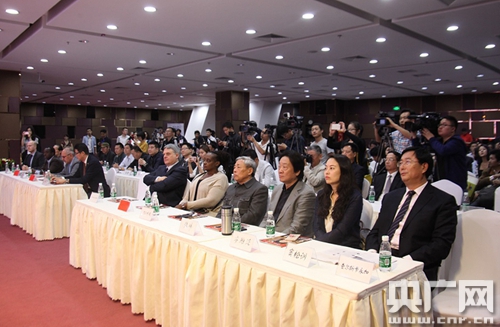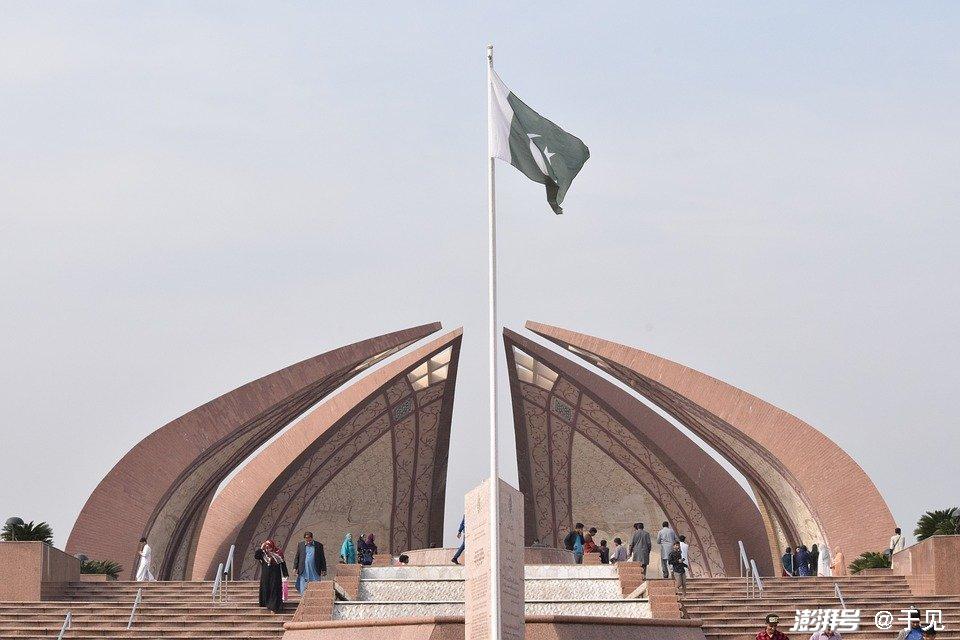——Summary Of Jiangsu’s “14th Five-Year Plan” Economic And Social Development Part 3
——Summary Of Jiangsu’s “14th Five-Year Plan” Economic And Social Development Part 3
In Jiangsu, a grand movement of coordinated regional development is reaching its climax - the ratio of per capita regional GDP between southern and northern Jiangsu has shrunk to 1.86, and the ratio of per capita disposable income of residents has shrunk to 1.80, making it one of the provinces with the smallest regional gap in the country. Behind the numbers
In Jiangsu, a grand movement of coordinated regional development is reaching its climax - the ratio of per capita regional GDP between southern and northern Jiangsu has shrunk to 1.86, and the ratio of per capita disposable income of residents has shrunk to 1.80, making it one of the provinces with the smallest regional gap in the country. Behind the numbers is the real sense of gain for millions of Jiangsu people.
Those who do not plan for the overall situation cannot plan for one area. In today's Jiangsu, north and south are no longer just geographical concepts, but have become development units with complementary advantages; urban and rural areas are no longer distinct, but an integrated and symbiotic organic whole; provincial development resonates with national strategies such as the integration of the Yangtze River Delta and the Yangtze River Economic Belt. Jiangsu is playing a regional development concerto with a "chess game" layout thinking.
Linking the South and the North, from "one-way assistance" to "coordinated progress"
On the map of Jiangsu, the Yangtze River not only connects the north and south geography, but also affects the pulse of development. The huge disparity in economic development level and strength between southern and northern Jiangsu was once a thorn in the side of Jiangsu people, but now it has changed.
During the "14th Five-Year Plan" period, Jiangsu's north-south linkage has been upgraded from simple industrial transfer to in-depth innovation collaboration.
In March 2022, our province issued the "Implementation Opinions on Deepening North-South Paired Assistance Cooperation" and launched a new round of north-south assistance work. On the one hand, it adjusted the assistance relationship, and on the other hand, it increased the areas of assistance. It expanded from promoting industrial transfer to promoting the reasonable division of labor in the value chain of the entire north-south industrial chain. Jiangsu's north-south cooperation has fully entered a win-win stage with the goal of common prosperity.
In Suqian, more than 400 kilometers away from Suzhou City, on Suzhou Street in the Susu Industrial Park, Suzhou-style buildings with white walls and black tiles, small bridges and flowing water stand quietly. The park accounts for only 0.16% of Suqian's land, and contributes 6% of the city's general public budget revenue, 8.7% of industrial added value, 8.6% of actual utilized foreign investment, and 37.5% of high-tech industrial output value.
The development of the "North-South Jointly Building Park" is a vivid footnote for Jiangsu to solve the problem of unbalanced development between the North and the South. There are currently 55 industrial enterprises with investments exceeding 1 billion yuan in the 8 jointly built parks in our province, and 24 industrial enterprises with tax payments exceeding 10 million yuan.
The joint construction of the park is the "skeleton" of north-south linkage, and innovation collaboration is the "blood" flowing through it.
Between Wuxi and Lianyungang, a commercial aerospace industry chain is accelerating to form. The industrial cooperation model of "R&D in southern Jiangsu and production in northern Jiangsu" allows innovation elements to transcend geographical barriers. The province has built 15 north-south science and technology enclaves, becoming "innovation outposts" for regional collaboration.
The temperature of the North-South linkage will ultimately be measured by the people's sense of gain. Since 2022, southern Jiangsu has raised 384 million yuan in assistance funds every year, and northern Jiangsu has arranged about 200 projects every year. In principle, it will not be used for capital construction, but with capacity improvement as the project goal. In the field of education, north-south education has been paired to achieve full county coverage; in the field of human resources, 65 north-south job fairs have been held, with 20,900 positions posted.
After years of hard work, the coordinated development of north and south Jiangsu has achieved remarkable results: the gap in per capita regional GDP between southern and northern Jiangsu has narrowed from 3.5 times in 2000 and 2.7 times in 2010 to 1.86 times in 2024. Jiangsu has become one of the provinces with the best balanced regional development in the country.
"The development of southern Jiangsu and northern Jiangsu has changed from a clear differentiation in the past to a narrowing gap now, and the flow of high-level factor resources has changed from a one-way output in the past to a two-way smooth flow now." Lu Yonggang, deputy director of the Economic Research Institute of the Provincial Academy of Social Sciences, believes that the spillover effect of north-south cooperation and the amplification of its leading role have led to Jiangsu entering a new stage of all-round integration of "multi-chain" industrial complementary supporting facilities and "multi-domain" social undertaking collaboration.
Bringing urban and rural areas closer, from "dual structure" to "integrated development"
"Farmers working on the land never thought they could open B&Bs?" Chen Shi, an old farmer in Wujiang District, Suzhou City, lamented, describing the changes in countless villages.
Only by realizing the integrated development of urban and rural areas can the space for domestic circulation be broader and more abundant. Since the "14th Five-Year Plan", Jiangsu has used systematic reforms to break the "dual structure" of urban and rural areas, allowing cities and rural areas to move from separate development to symbiosis and common prosperity.
Rural industrial development is the cornerstone of urban-rural integrated development. Walking into the "A Intelligent Greenhouse Factory" in Yisheng Village, Haimen District, Nantong, the Internet of Things technology gives traditional agriculture a new lease of life; strolling through the rose garden in Meiqi Village, Yixing, you can see the flowers of wealth blooming in specialty industries.
These changes are not isolated cases - the province has built 283 "unmanned" farms, cultivated 5 national-level characteristic industrial clusters, created 500 themed creative farms and 120 rural leisure sports bases.
Promoting the free flow of factors is the key path to breaking the urban-rural dual structure and activating the momentum of integrated development. To run rural affairs well, we cannot limit ourselves to rural areas. We must regard rural areas and cities as an organic whole.
The top-level design of the policy system has built "four beams and eight pillars" for urban-rural integration: In 2021, Jiangsu issued the "Implementation Plan for the National Urban-rural Integrated Development Pilot Zone (Jiangsu Ningxichang Joint Area)"; in 2024, it issued the "Notice on Strengthening County and Township Land Spatial Planning to Promote Urban-rural Integrated Development"; the "No. 1 Document" issued by the provincial party committee in consecutive years has regarded urban-rural integration as an important part of promoting comprehensive rural revitalization.
The connectivity of infrastructure turns the “last mile” into the “most beautiful mile”. "I used to have to travel more than ten miles to the town to pick up express delivery, but now I can get it at my doorstep." said Chen Yuanhua, a villager in Chenbian Village, Honglan Street, Lishui District, Nanjing City.
At present, the total mileage of rural roads in the province reaches 140,000 kilometers. It is the first in the country to achieve full coverage of two-lane four-level highways in administrative villages, and the coverage rate of township express outlets has reached 100%. This year, the province will renovate 1,400 kilometers of rural roads and open 155 kilometers of "dead roads".
The integration of urban and rural areas requires both shaping and soul-building. At the same time as the integration on the material level, cultural integration is also happening quietly. The "Jasmine Blossoms" cultural express train enters the countryside, "Seeing Su Yun" allows villagers to enjoy the exhibition at their doorsteps, and the "Village BA" basketball game ignites rural vitality... A series of cultural exchange activities continue to expand cultural space and deliver cultural resources to the countryside.
One flower blooming alone is not spring, but a hundred flowers blooming together fills the garden. Coordinating urban and rural areas, five years of exploration have yielded fruitful results: in 2024, the per capita disposable income of Jiangsu's urban and rural residents will increase by 5.2% year-on-year, and the income ratio of urban and rural residents will shrink year by year. A demonstration road of using the city to lead the countryside, using the countryside to promote the city, and promoting urban and rural co-prosperity is extending in Jiangsu.
Connecting the inside and outside, from "regional perspective" to "Jiangsu responsibility"
Over the past five years, Jiangsu has deeply integrated provincial development into the national strategic layout with an open and inclusive mind. From the deep integration of the Yangtze River Delta to the green development of the Yangtze River Economic Belt, to the precise implementation of counterpart support, we have demonstrated our responsibility to serve the overall situation with concrete actions.
Together, we will take the lead and advance the integrated development of the Yangtze River Delta in depth.
Liu Wei, who lives in Huaqiao, Suzhou, and works in downtown Shanghai, now commutes by Shanghai Metro Line 11 in just 30 minutes. The "tale of two cities" has become a "tale of the same city."
In the past five years, we have witnessed a rising Yangtze River Delta. In 2023, the Yangtze River Delta region's GDP will account for 24.4% of the country's total, rising to 24.7% in 2024, and exceeding 25% in the first quarter of 2025.
Since the integrated development of the Yangtze River Delta became a national strategy, Jiangsu has always been an important participant and contributor. In 2024, Jiangsu will achieve a regional GDP of 13.7 trillion yuan, accounting for 41.3% of the total in the Yangtze River Delta. Closely following "integration" and "high quality", our province has jointly built the Yangtze River Delta laboratory network and established two batches of 24 parent-triangle innovation consortiums to jointly promote integrated practical matters such as improving the quality and expanding the coverage of cross-provincial medical insurance... Innovative collaboration has allowed the Yangtze River Delta to move from "adjacent" to "integrated"; the mechanism has broken barriers and allowed elements to move from "flow" to "integration".
Green development and the construction of the Yangtze River Economic Belt have achieved remarkable results.
Let’s work together to protect the country and not engage in large-scale development. Over the years, Jiangsu has implemented the development strategy of the Yangtze River Economic Belt in depth, focusing on infrastructure connectivity, ecological environment co-construction, and industrial development coordination, and has become the main force in promoting the high-quality development of the Yangtze River Economic Belt.
In 2024, the total foreign trade import and export value of the 11 provinces and cities in the Yangtze River Economic Belt will reach 19.85 trillion yuan, accounting for 45.3% of the country's total import and export value, and the scale will hit a record high for the same period in history. Among them, Jiangsu's foreign trade import and export reached 5.62 trillion yuan, a year-on-year increase of 7%. Regional foreign trade accounted for 28.3% of the total foreign trade value of the Yangtze River Economic Belt, ranking first in the Yangtze River Economic Belt.
Across mountains and rivers, win-win cooperation highlights the warmth of Jiangsu.
On September 26, at the 4th Jiangsu Counterpart Support and Cooperation Regional Specialty Commodity Fair, more than 200 companies from Jiangsu Counterpart Support, East-West Cooperation, and Counterpart Cooperation regions faced thousands of buyers for negotiations.
Since the "14th Five-Year Plan", Jiangsu has allocated more than 34 billion yuan in counterpart support and cooperation funds, organized and implemented more than 8,000 counterpart support and cooperation projects, and recruited more than 1,600 new cadres and talents. These cooperation across mountains and seas not only convey the momentum of development, but also convey the warmth of the era of "common prosperity".
Looking forward to the future, Jiangsu will continue to plan a new chapter of regional development with systematic thinking, cultivate more growth poles in the joint construction of the north and the south, create more opportunities for shared wealth in the integration of urban and rural areas, and show greater responsibility in serving the national strategy. This road is not only related to economic development, but also to the well-being of the people; it not only shapes Jiangsu's appearance today, but also determines what it will look like tomorrow.





